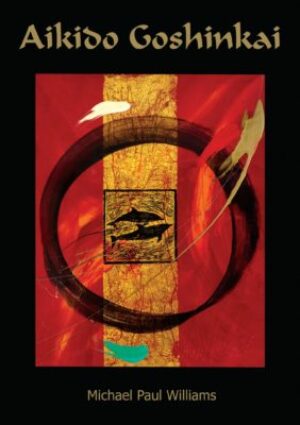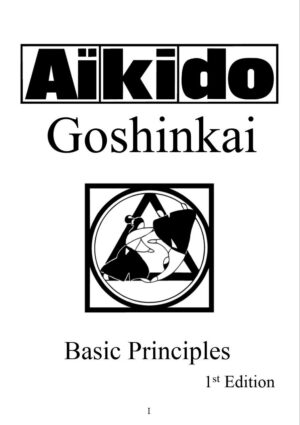Resource downloads below – Please click to download
Resources that can be purchased at the dojo –
Aikido Goshinkai Basic Principles Handbook


Aikido Goshinkai Basic Principles Handbook – After 3 years and 34 original drafts and 69 draft with the desktop publishing software, we are so happy to publish this guide by Michael Williams Sensei. This guide will be an enormous help to to students and instructors. I hope you all enjoy this guide as I did working on it. To all the people that helped along the way I would like to thank you for your help.
The Aikido book has taken a little longer than expected as extra content has been added. The guide has 226 pages (The last red guide third edition was 145 pages). We thank you all for your patience and support.
Sensei Mark Albrecht
Available at the Aikido Community Dojo
Aikido Goshinkai trainning Dojos
Main Goshinkai Website – aikidogoshinkai.com
Australia –
New South Wales:
Aikido Community Tweed Heads: aikidocommunity.org.au
Byron Bay Aikido Club: aikidoinbyron.com
Setsudo Ewingsdale: ea.aikido@gmail.com
Aikido Goshinkai Grafton : markqiki@gmail.com
Queensland:
Yeppoon Aikido: keppelmartialarts.com
Rocky Aikido: facebook.com/RockyAikidoDojo
Brighton Aikido: aikidoqueensland.com
Mitchelton: whitecormac@gmail.com
Aikido Carseldine: whitecormac@gmail.com
Onami Dojo Capalaba: aikidocapalaba.com
Western Australia:
Aikido Port Kennedy, Koshinkan: aikidoportkennedy.com
South Australia:
Southern Waters Aikido Goshinkai: Aikido Goshinkai Whyalla
Victoria:
Aikido Arts Melbourne: aikidoarts.com.au
New Zealand –
Aikido Kaipara: aikidokaipara.wordpress.com
UK –
Aikido Goshinkai Isles Of Scilly: Aikido Goshinkai Scilly
Singapore –
Aikido Goshinkai Singapore: Aikido Goshinkai Singapore
JAPANESE WORDS TO LEARN
ai ( eye ) = Harmony or Love
ki ( kee ) = Life energy; the energy of the Universe
do ( doe ) = the way
dojo ( doe-joe) = The training hall
kamiza ( kah-mee-za ) = a focus for respecting the spirit of the dojo
sensei ( sen-say ) = teacher
rei ( ray ) = respectful bow towards one another
gi ( gee ) = practice uniform
obi ( oh-bee ) = belt
seiza ( say-za ) = the kneeling position
hajime ( ha-jee-may ) = ‘Begin’
yame ( yah-may ) = ‘Stop’
hai ( ha-ee) = ‘Yes’ or ‘Start’
bokken ( bock-ken ) = wooden sword
jo ( joe ) = wooden staff
tanto (tahn-toe) = wooden knife
ukemi ( oo-kay-mee ) = the art of defensive falling
uke ( oo-kay ) = the one who tumbles ; the person who attacks
nage ( nah-gay ) = the one who performs the techniques
tenkan ( ten-kahn ) = a turning movement
irimi ( ih-rih-mee ) = an entering movement
shizentai ( shee-zen-tye ) = standing with both feet equal, neither one forward
hanmi ( hummi ) = standing position with one foot forward.
kiai ( kee-eye ) = spirited shout with ki extension
maai ( maa-eye ) = safe distance between training partners
hakama ( ha-ka-ma) = the black ‘skirt’ that seniors wear
shikko ( shee-ko) = knee-walking
NUMBERS
1 = ichi ( eechee )
2 = ni ( nee )
3 = san ( sun )
4 = shi ( shee )
5 = go ( go )
6 = roku ( rock )
7 = shichi ( shee-chee)
8 = hachi ( hut-chee)
9 = ku ( koo )
10 = ju ( joo )
11 = ju-ichi ( joo-ee-chee)
12 = ju-ni ( joo-nee )
13 = ju-san ( joo-sun )
14 = ju-shi ( joo-shee )
15 = ju-go ( joo-go )
16 = ju-roku ( joo-rock )
17 = ju-shichi ( joo-shee-chee)
18 = ju-hachi ( joo-hut-chee )
19 = ju-ku ( joo-koo )
20 = ni-ju ( nee-joo )
21 = ni-ju-ichi ( nee-joo-eechee )
22 = ni-ju-ni ( nee-joo-nee )
23 = ni-ju-san ( nee-joo-sun )
24 = ni-ju-shi ( nee-joo-shee )
25 = ni-ju-go ( nee-joo-go )
26 = ni-ju-roku ( nee-joo-rock )
27 = ni-ju-shichi ( nee-joo-shee-chee)


